Did you know that sleep apnea can be common in lung disease patients and lung transplant recipients? Lung diseases such as chronic obstructive pulmonary disease (COPD), cystic fibrosis, and pulmonary fibrosis can affect respiratory function, leading to disruptions in sleep patterns, including sleep apnea.
.
After lung transplantation, patients may also experience sleep apnea due to various factors such as changes in respiratory mechanics, medications, and alterations in sleep architecture. Additionally, pre-existing conditions that contribute to lung disease, such as obesity or anatomical abnormalities, can further predispose individuals to sleep apnea.
.
Sleep apnea is a sleep disorder characterised by pauses in breathing or shallow breaths during sleep. These pauses can last from a few seconds to minutes and may occur multiple times per hour. There are three main types of sleep apnea:
💚 Obstructive Sleep Apnea (OSA):
* This is the most common type of sleep apnea.
* It occurs when the muscles in the throat relax excessively during sleep, leading to the collapse of the airway.
* Common symptoms include loud snoring, gasping for air during sleep, and daytime sleepiness.
* Risk factors for OSA include obesity, anatomical abnormalities in the upper airway, and age.
💚 Central Sleep Apnea (CSA):
* CSA is less common and occurs when the brain fails to send signals to the muscles responsible for breathing.
* Unlike OSA, there is no physical obstruction in the airway.
* CSA is often associated with conditions such as congestive heart failure, stroke, or neurological disorders.
* Symptoms may include difficulty staying asleep, frequent awakenings, and shortness of breath.
💚 Mixed Sleep Apnea:
* This type of sleep apnea involves a combination of obstructive and central sleep apnea.
.
The severity of sleep apnea is typically determined by the number of apnea (complete cessation of breathing) and hypopnea (shallow or insufficient breathing) events per hour during sleep. This is measured using a diagnostic test called a polysomnography (sleep study). The severity is often categorised as:
Source
